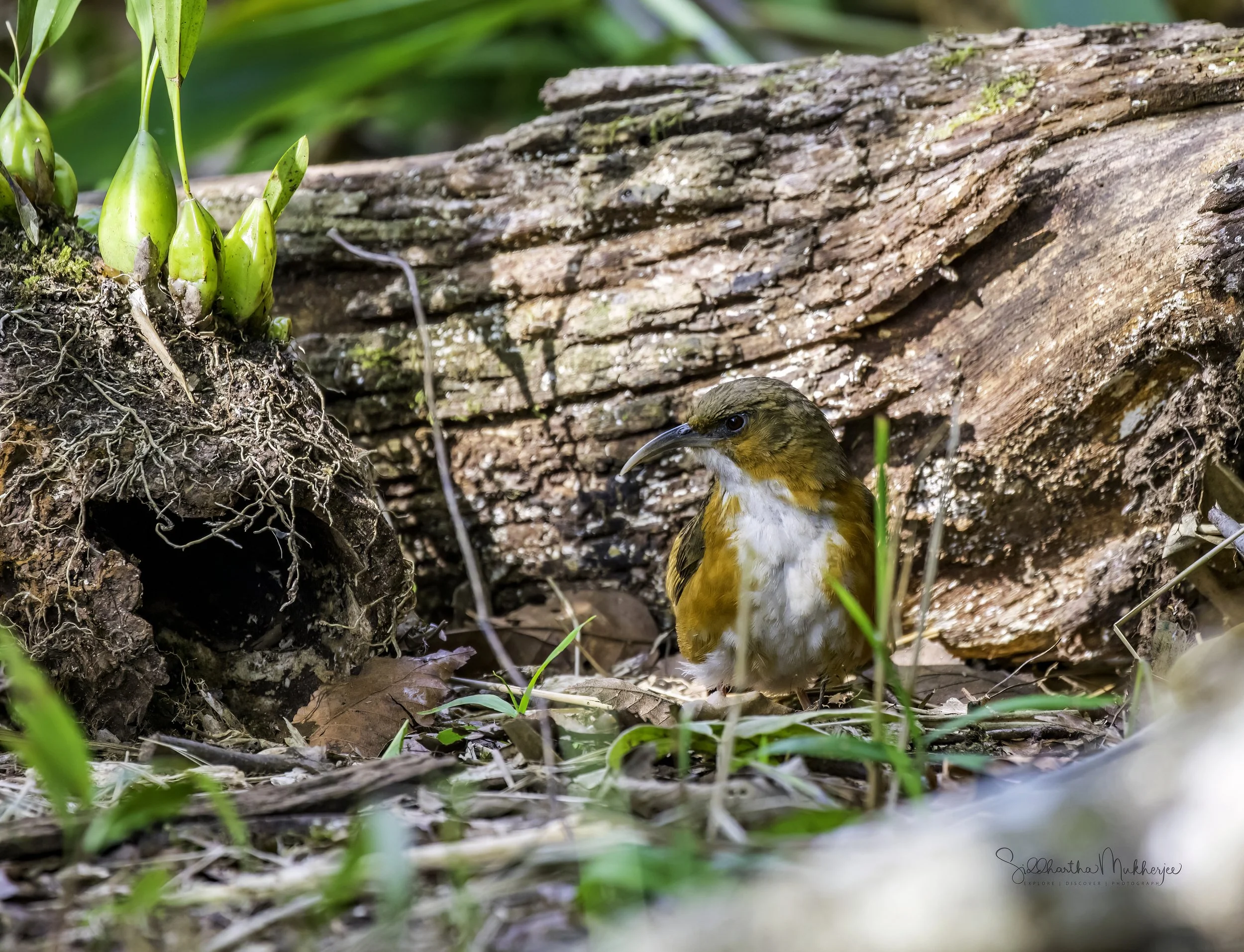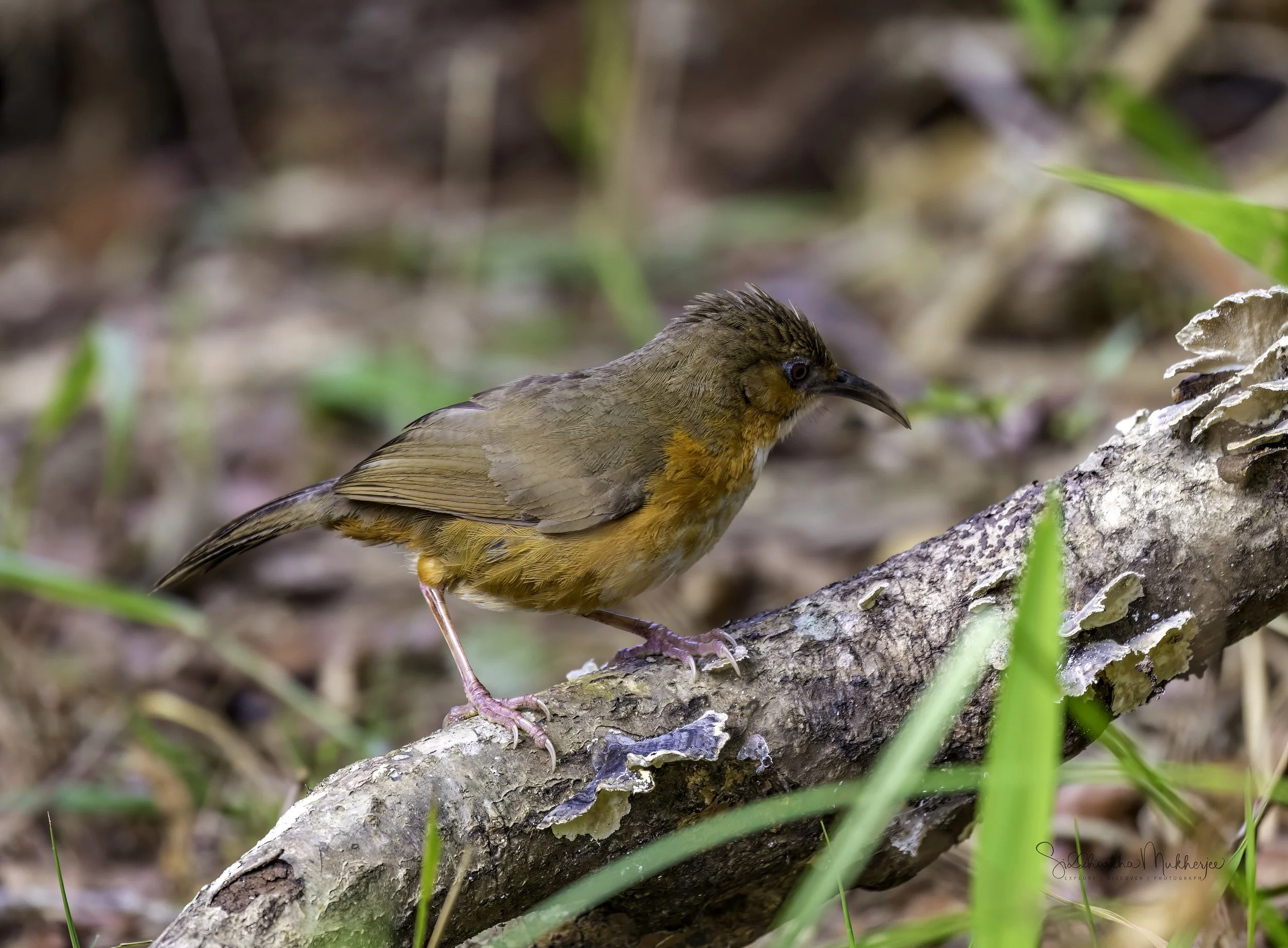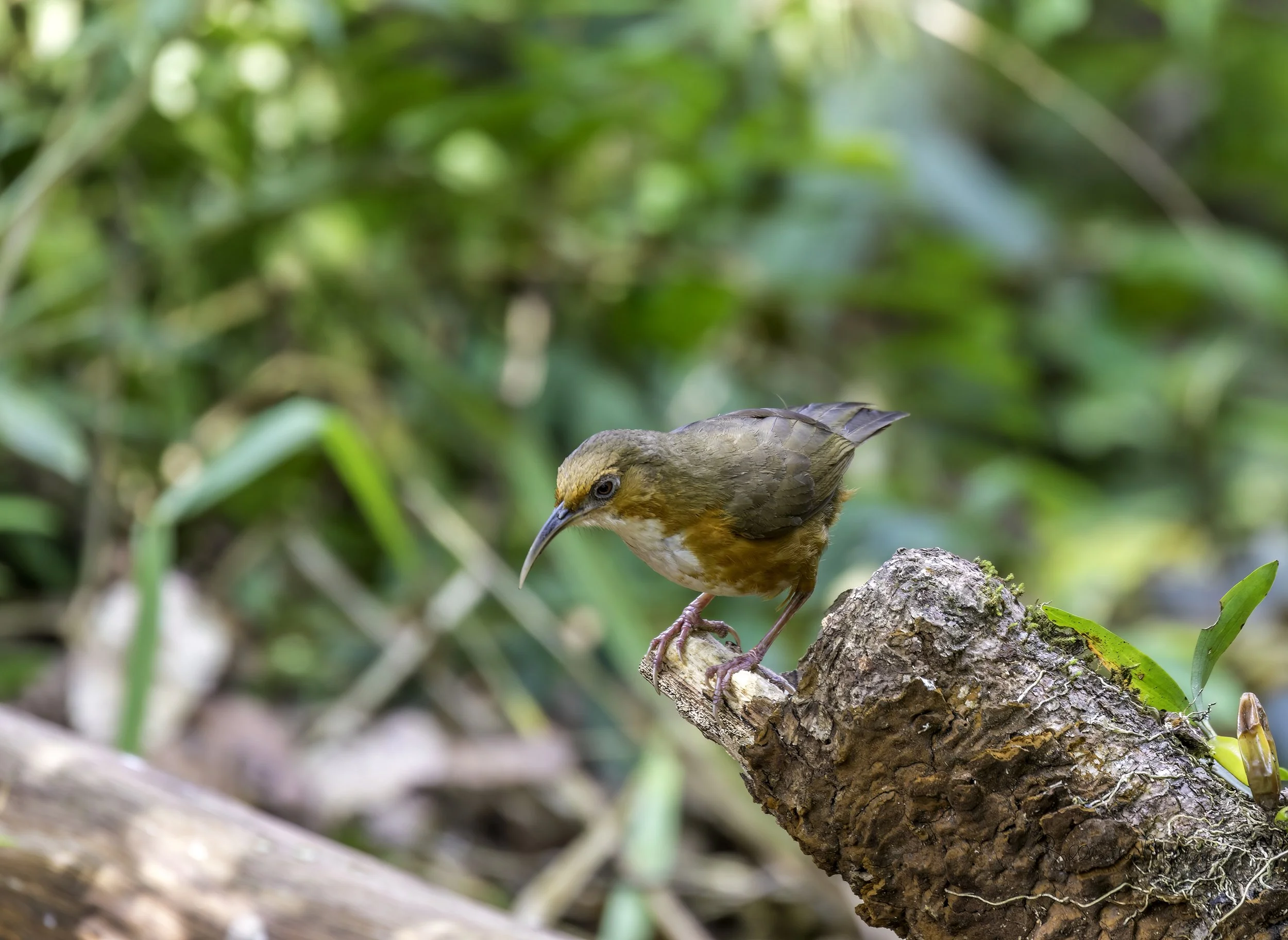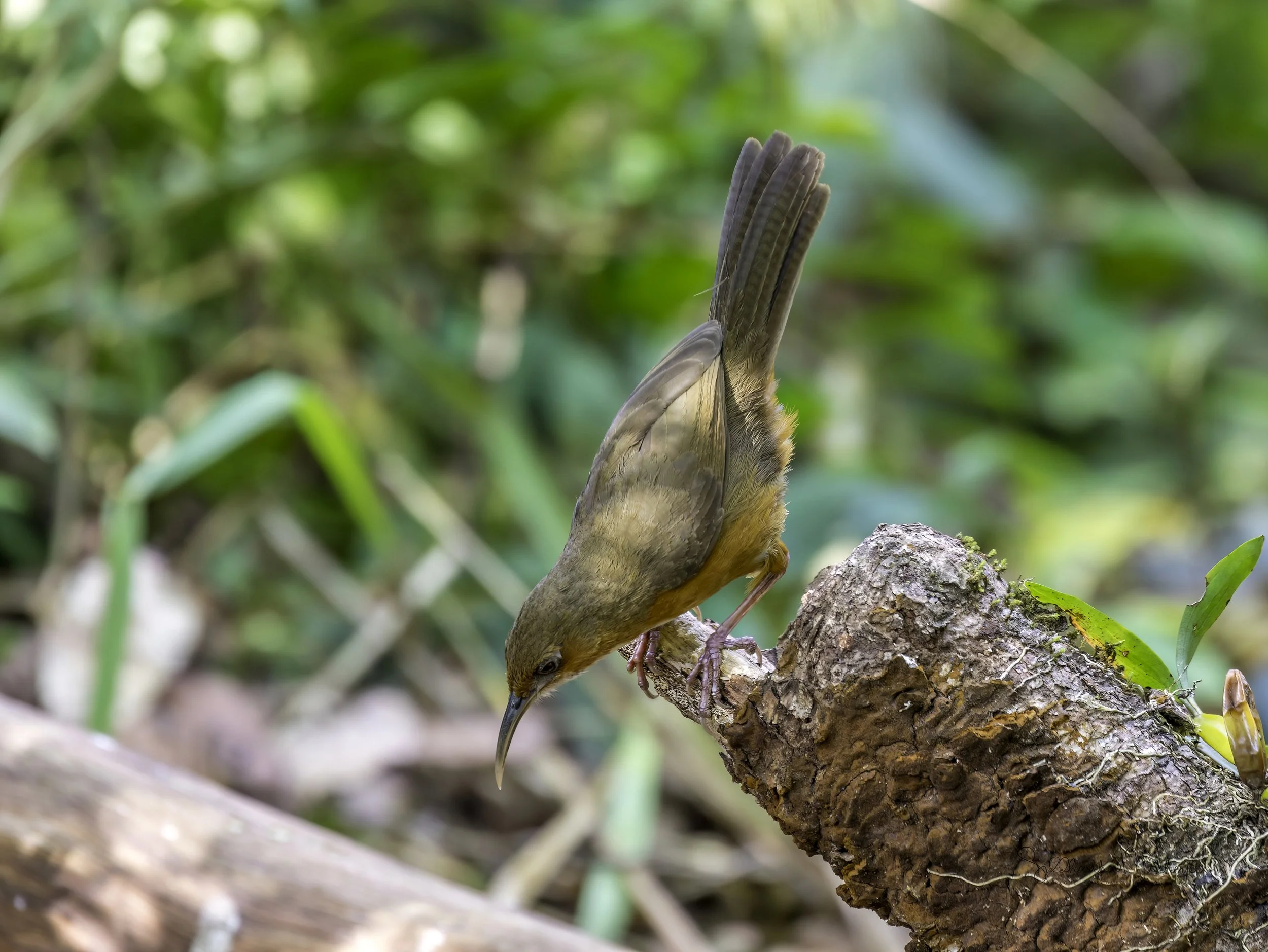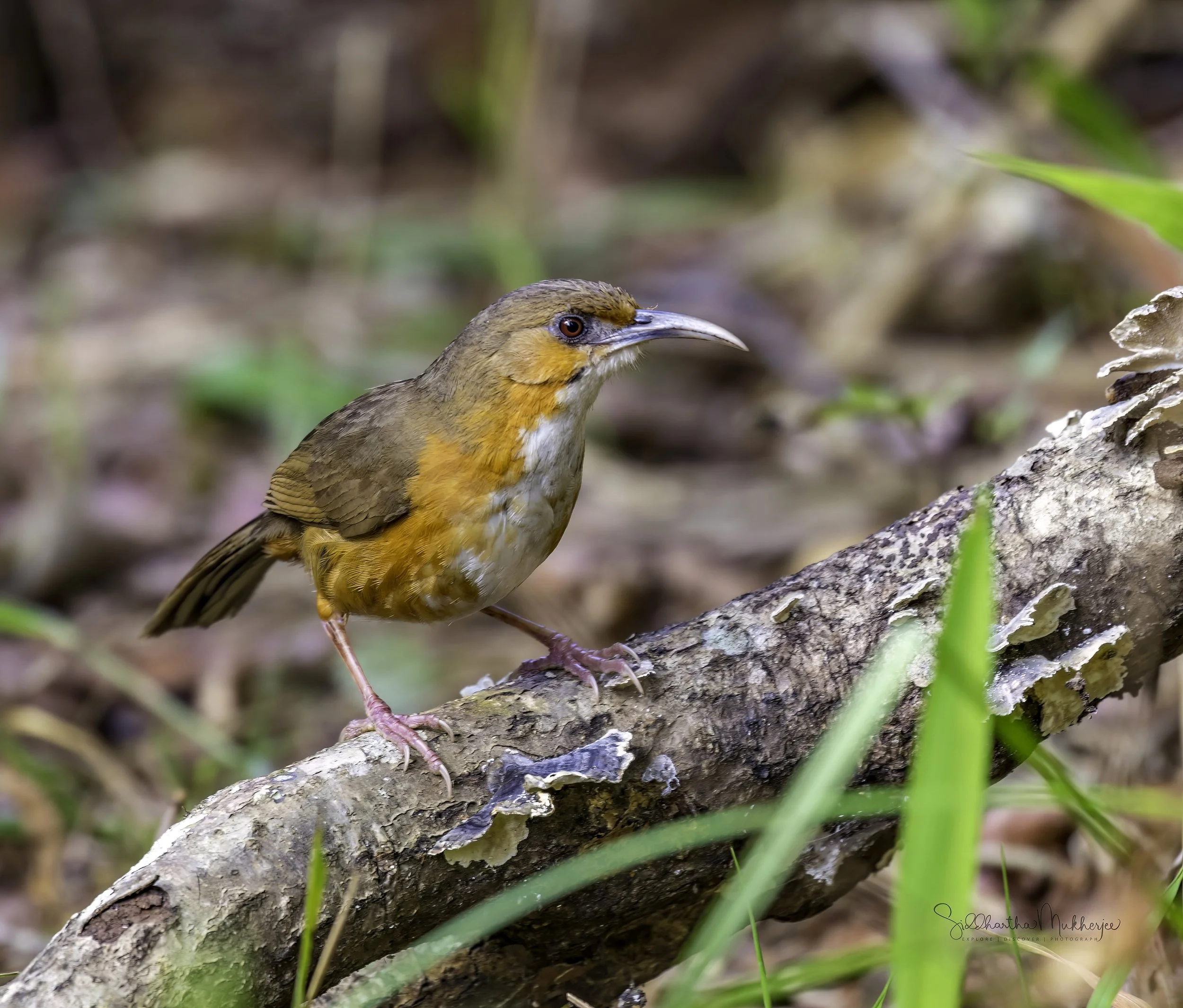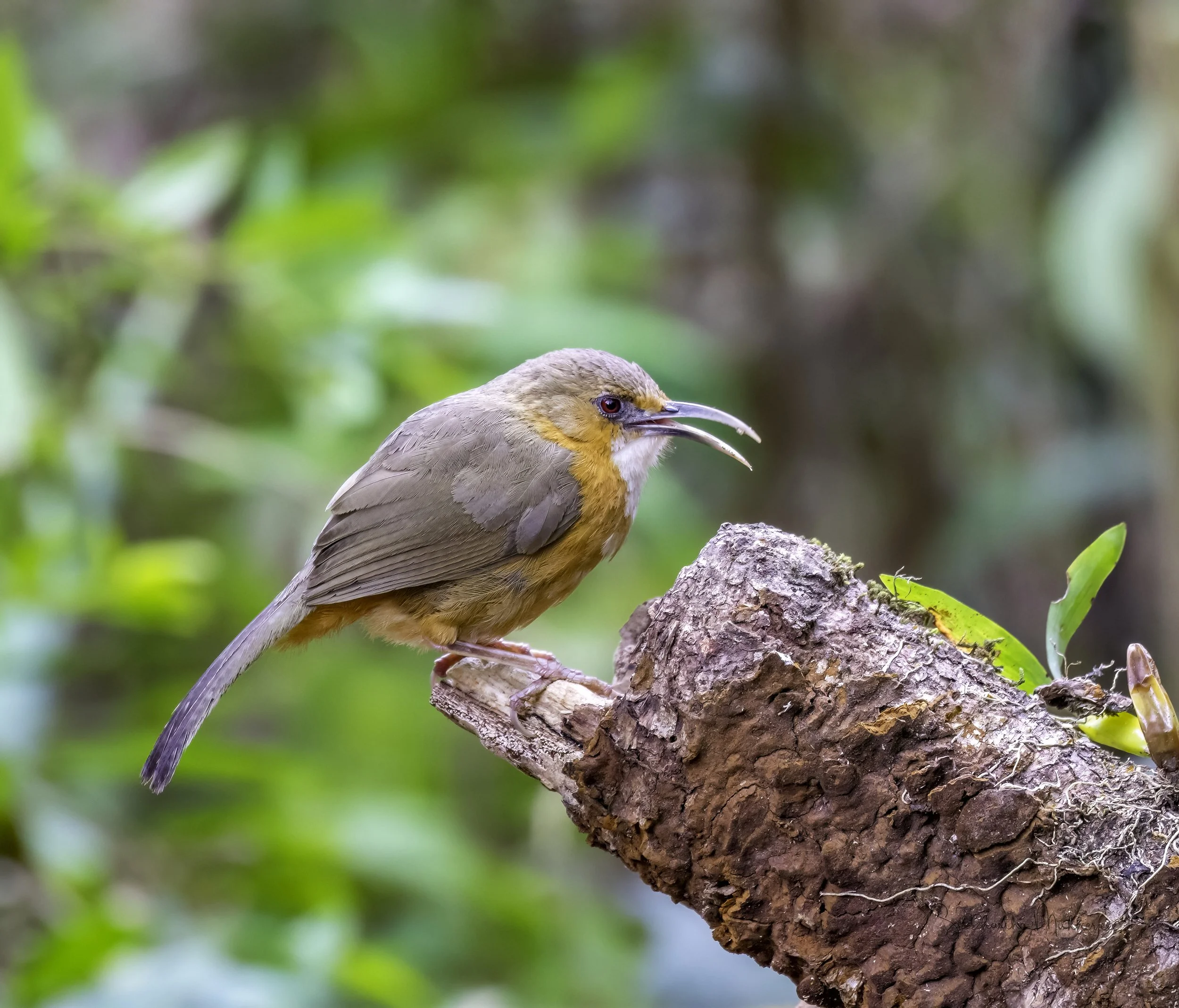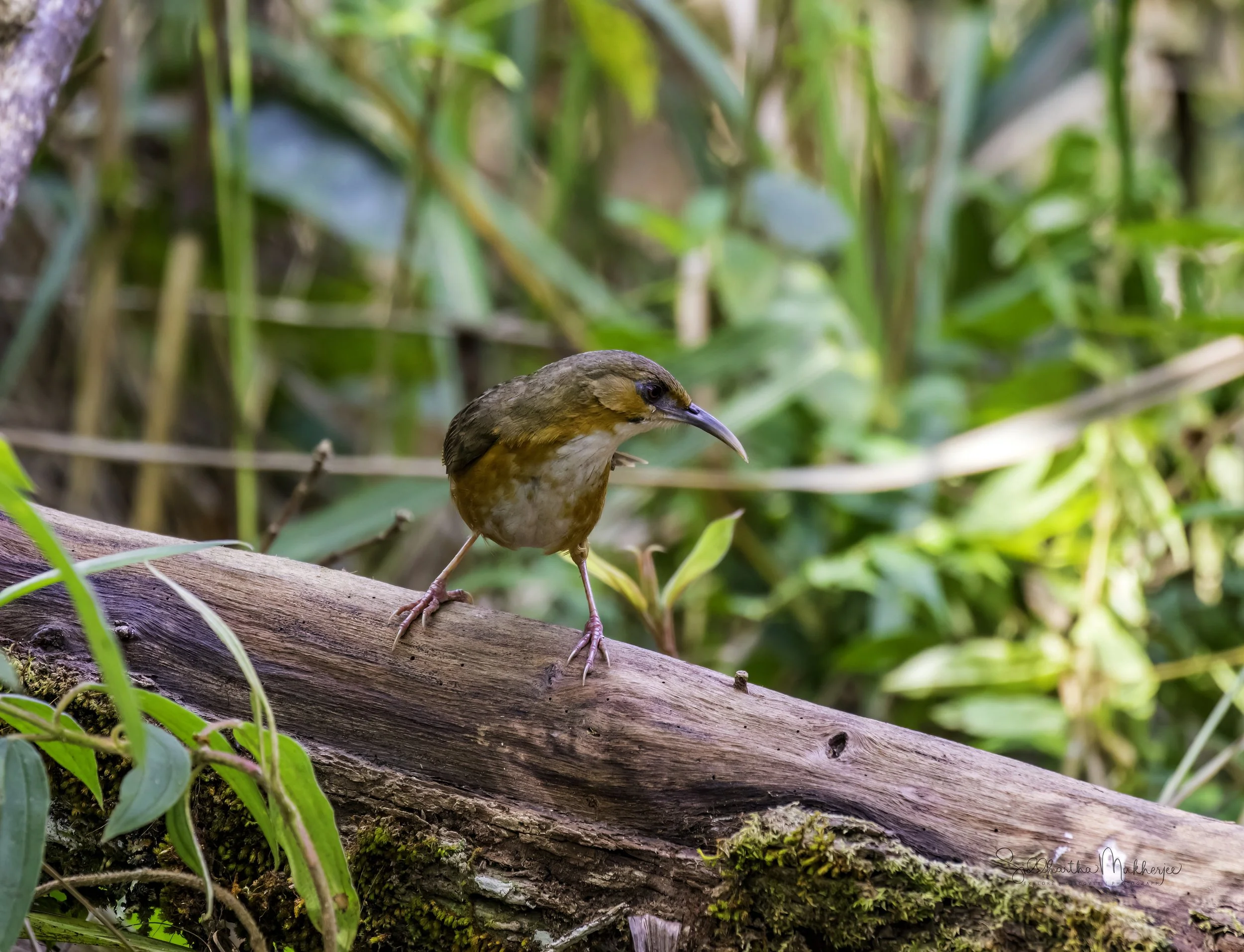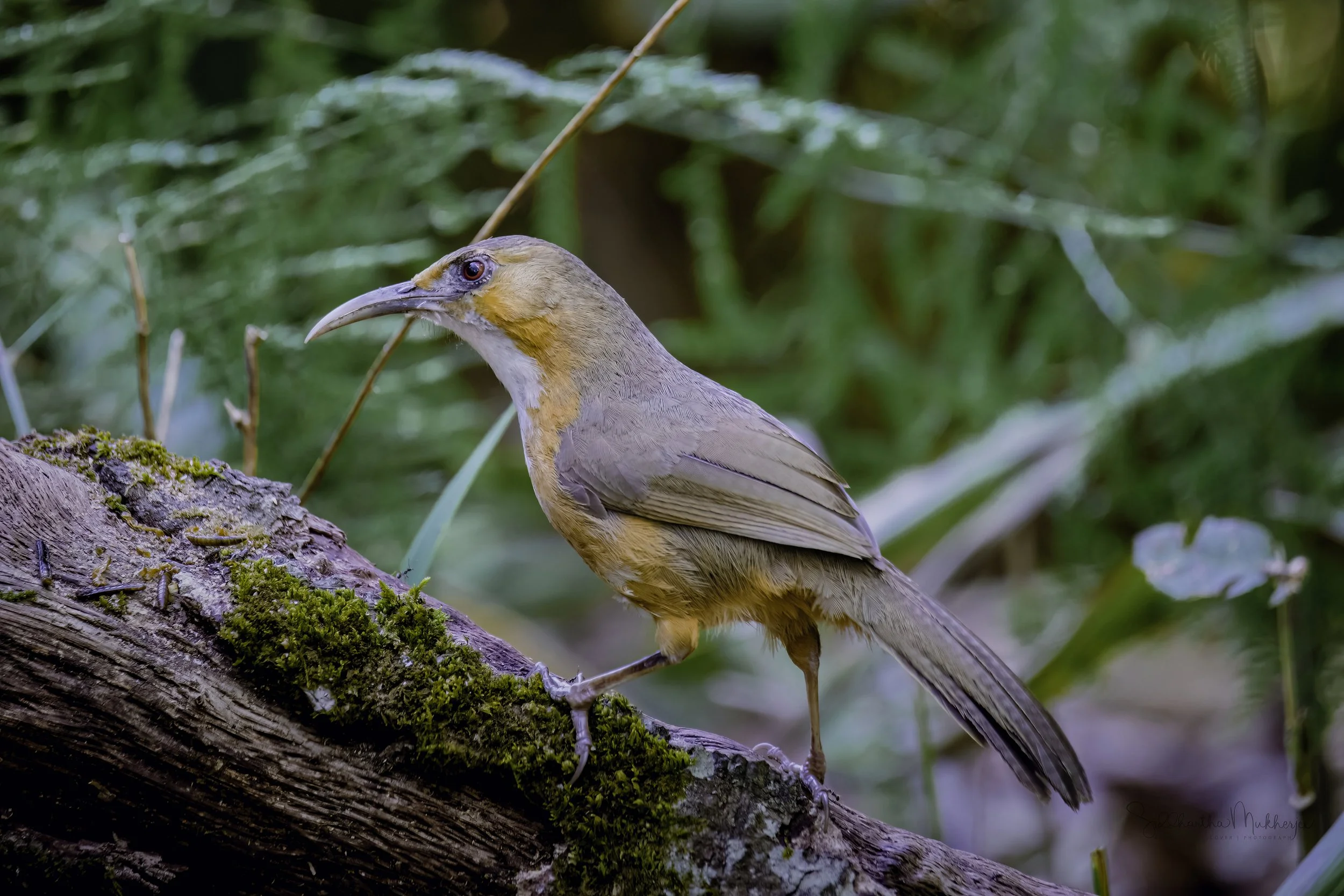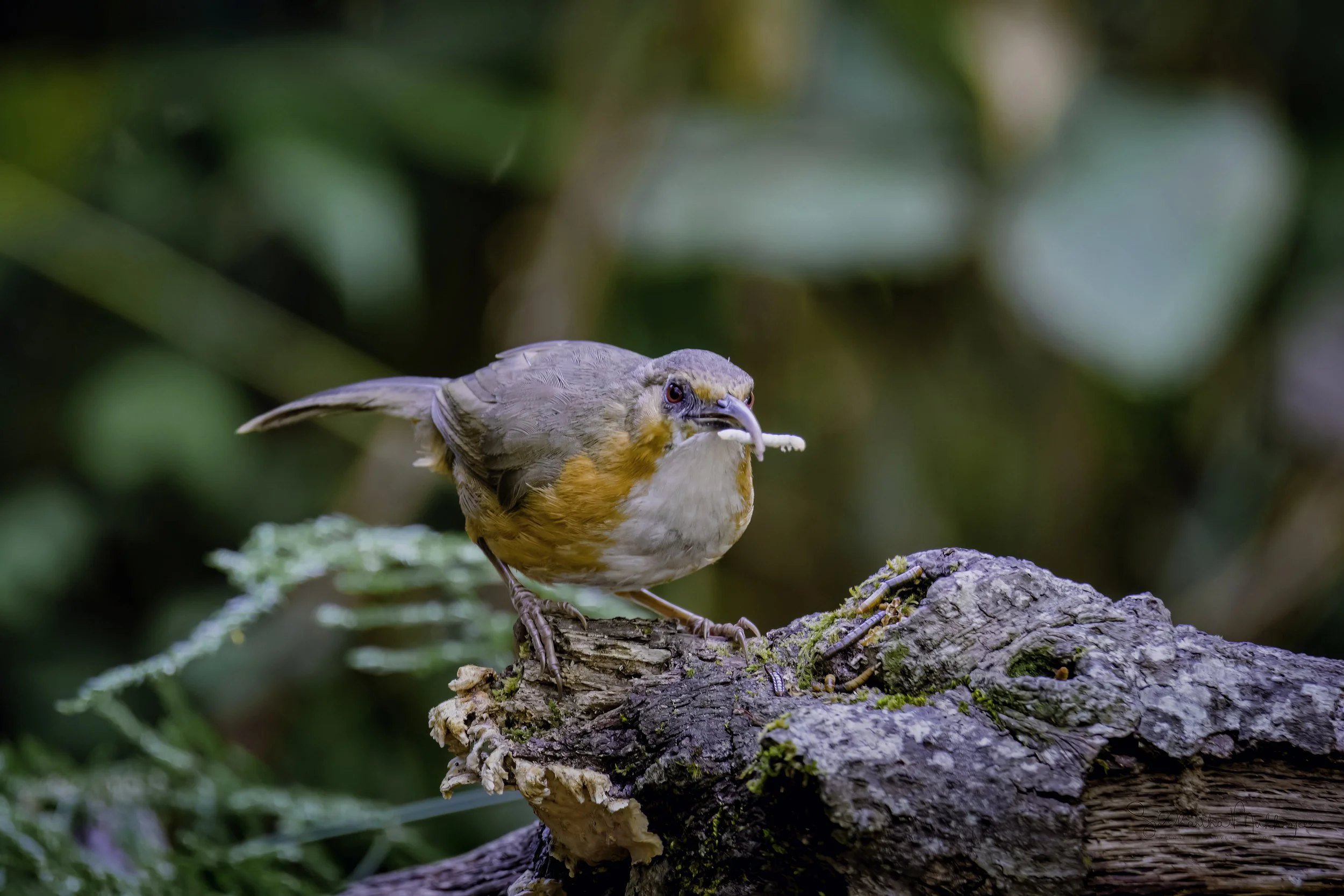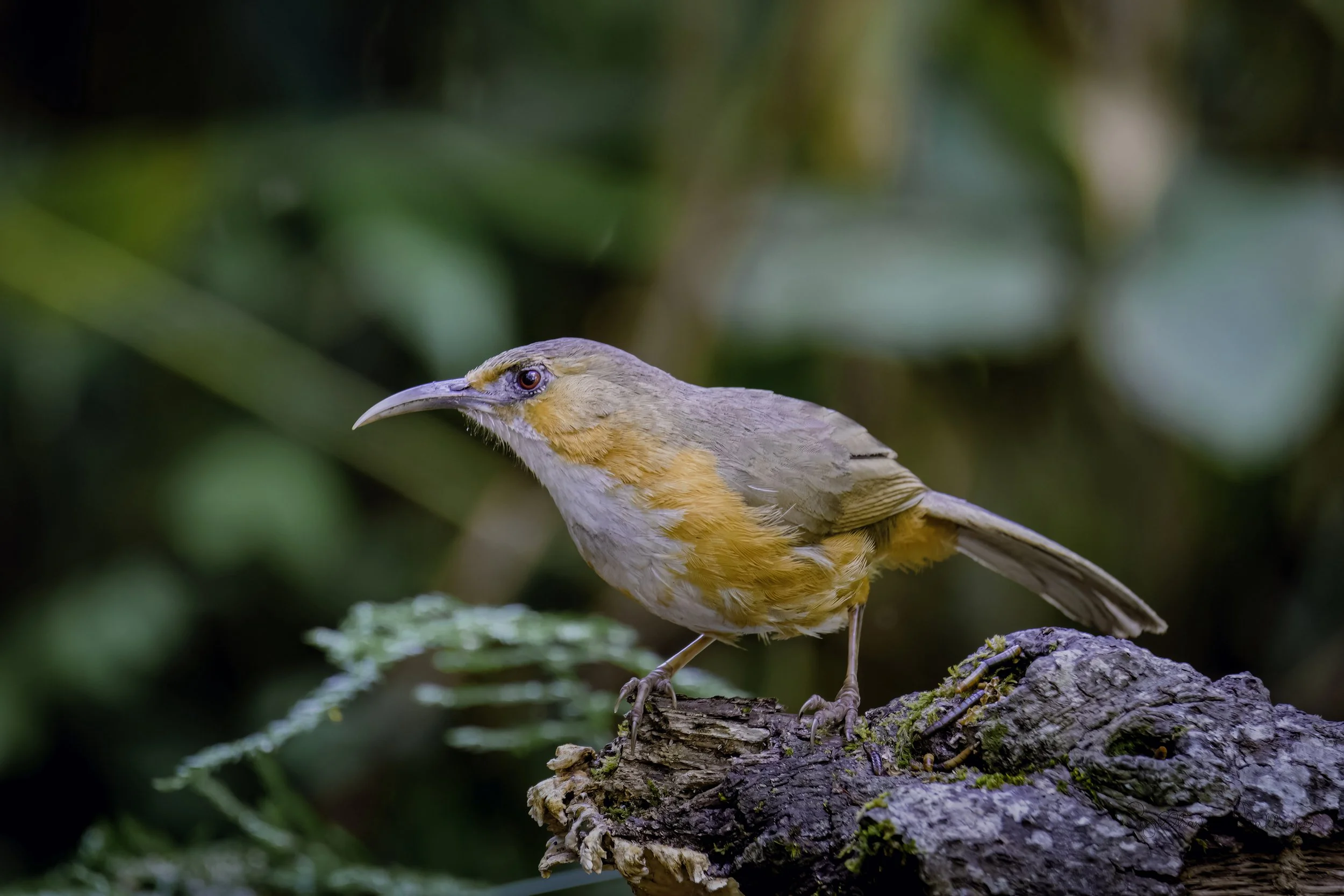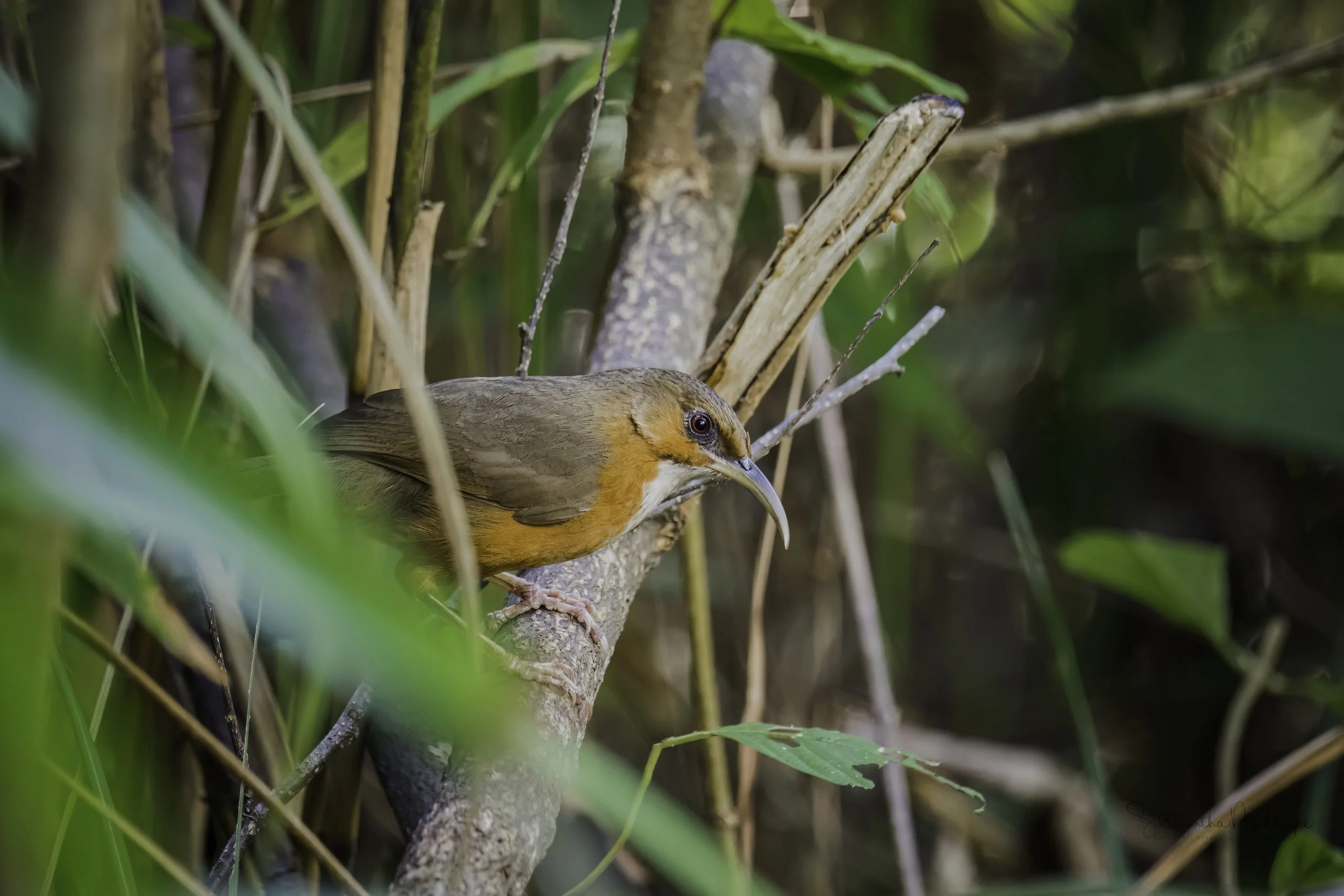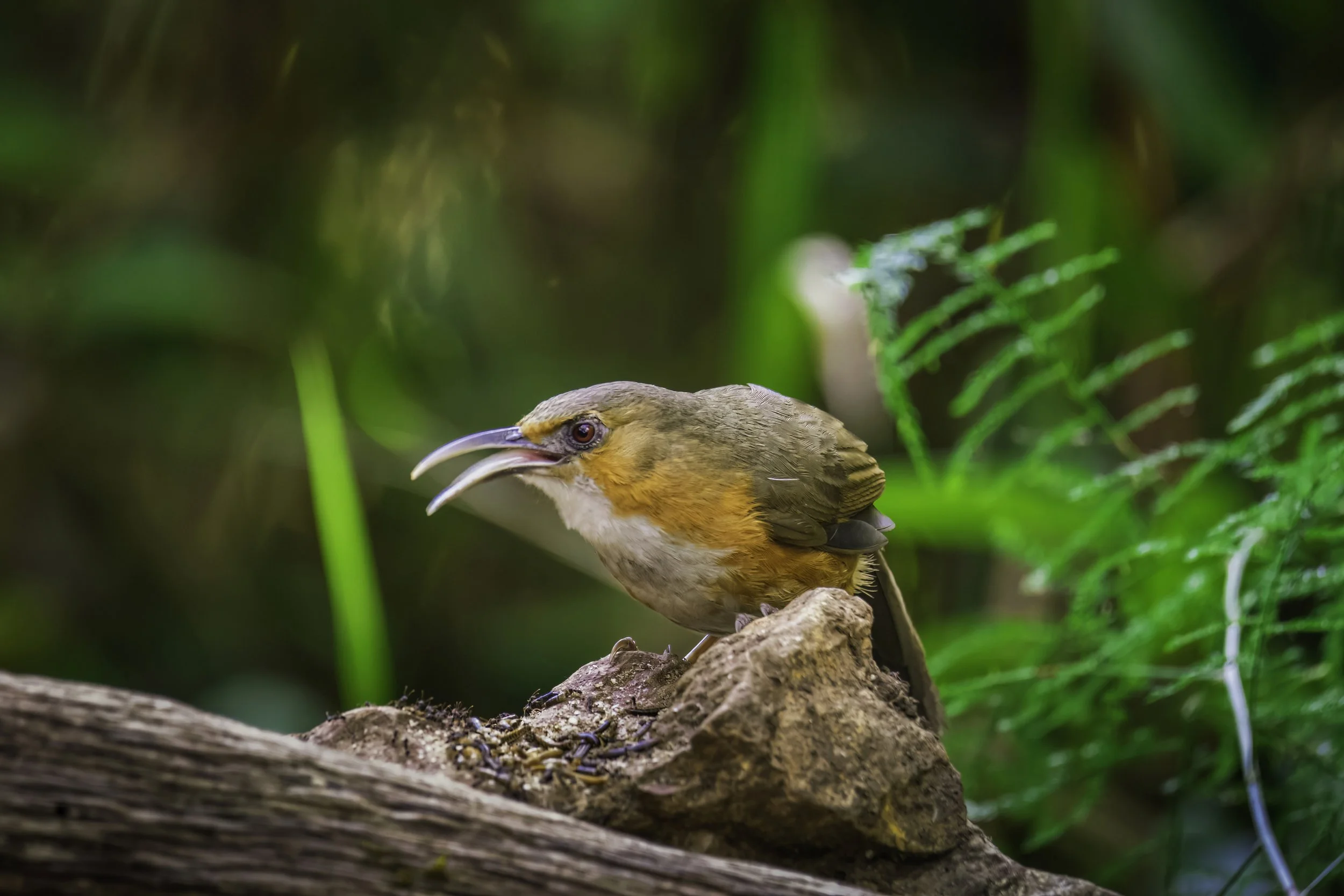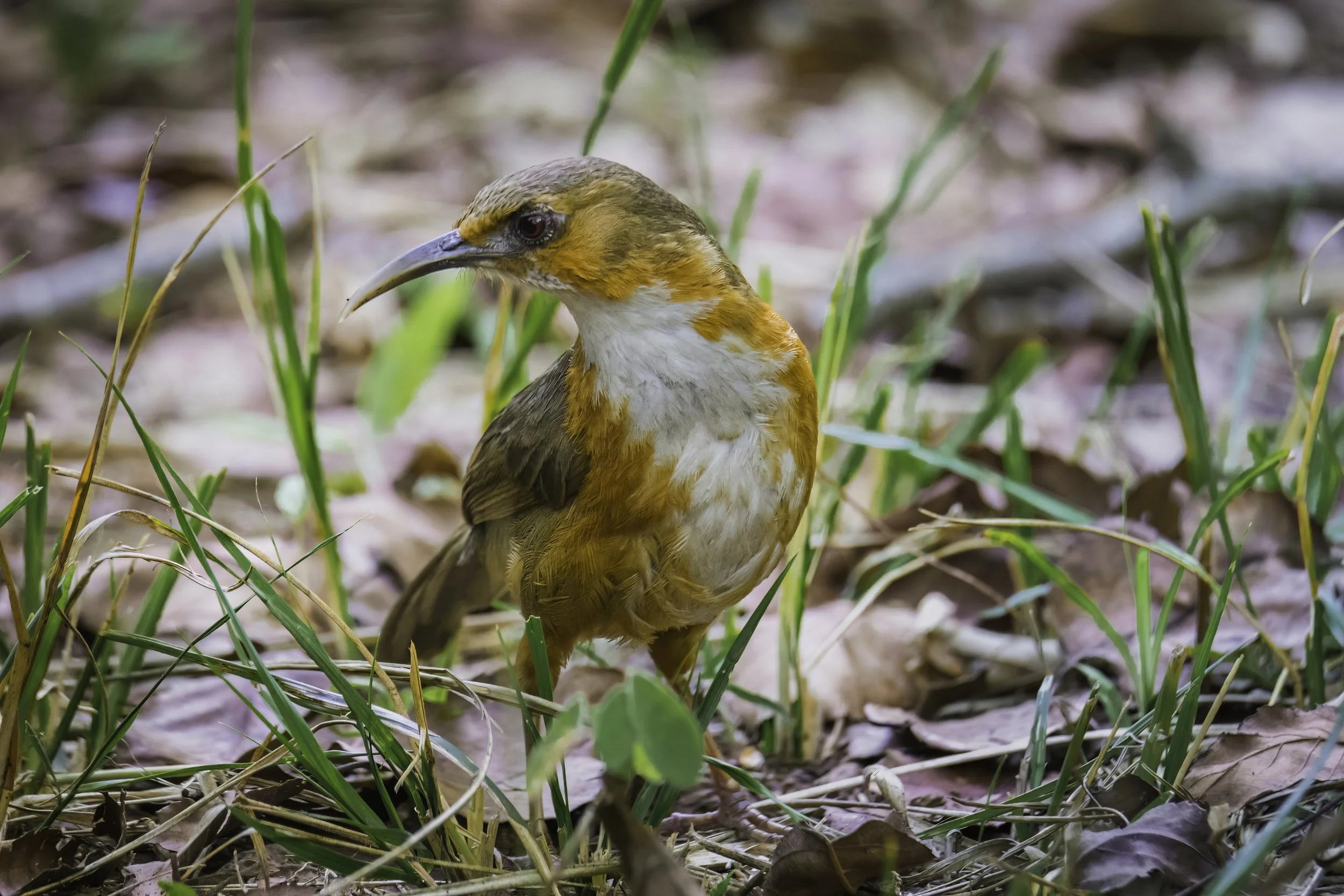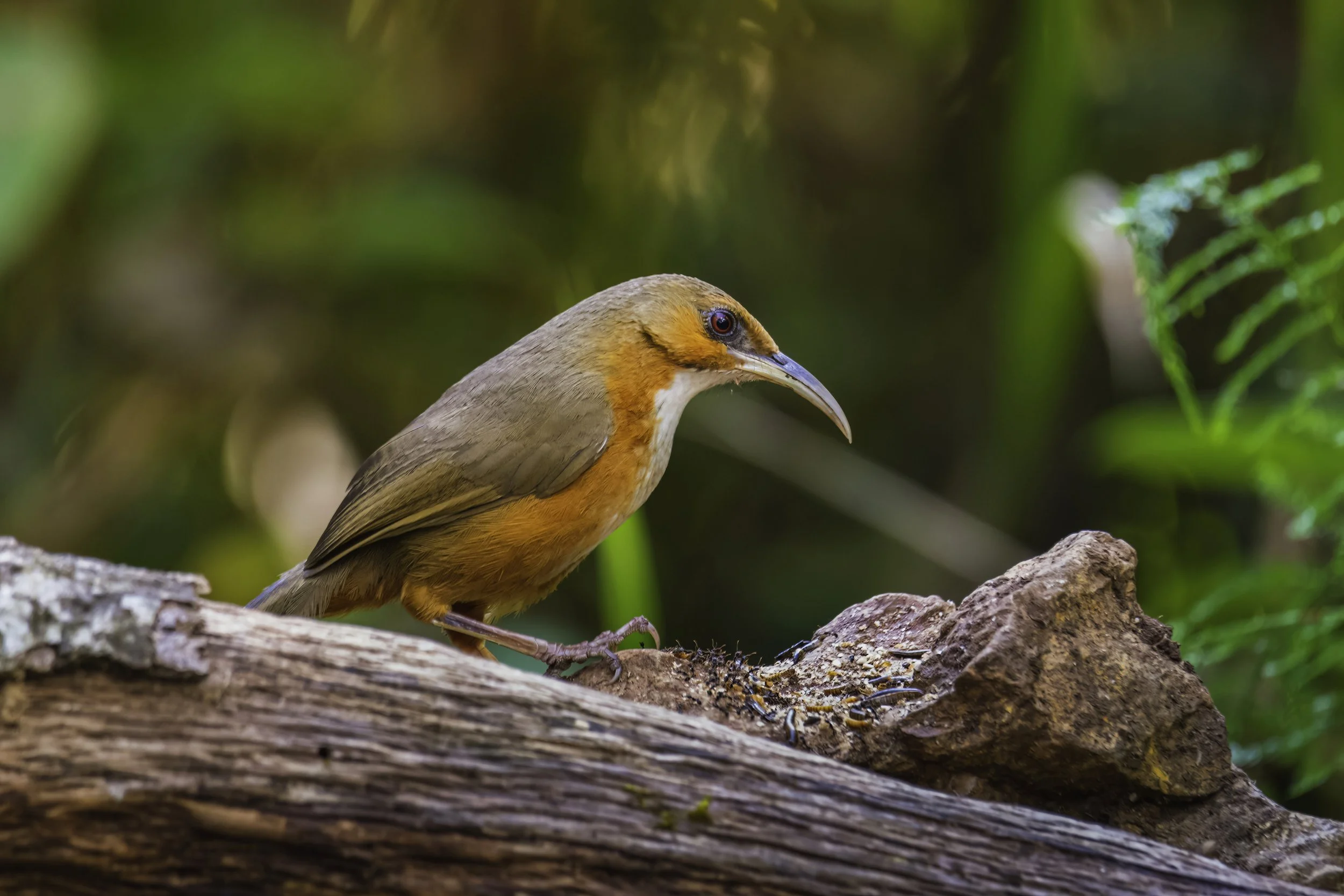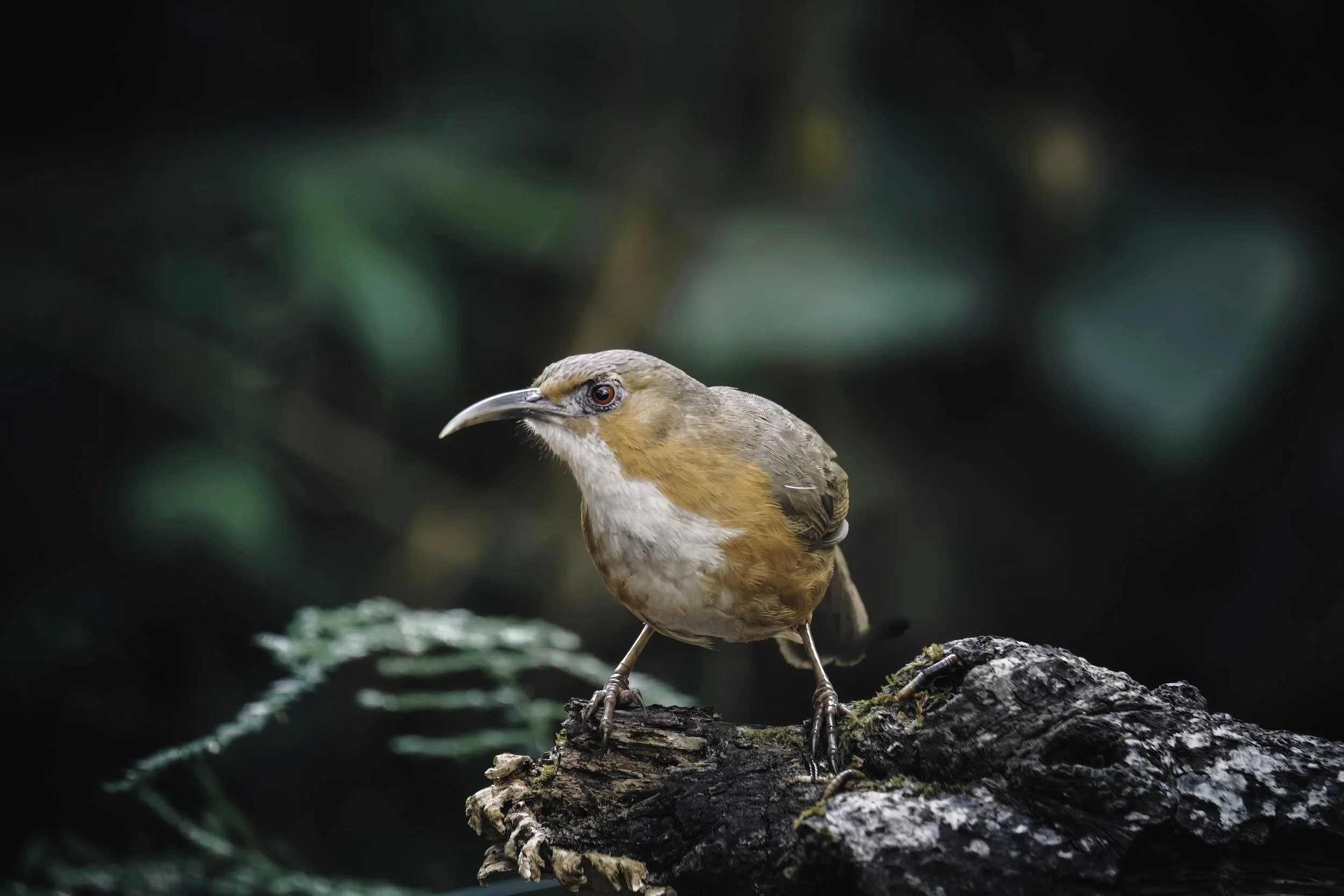Rusty-cheeked Scimitar Babbler
Erythrogenys erythrogenys
Doi Luang, Chiang Mai, Thailand
This blog was the outcome of a conversation on “Babblers“ and “Warblers“ I had with good friends and birding companions and it sparked the idea to write about the various babblers, warblers, parrotbills, white-eyes, fulvettas, laughingthrushes and their allies. I had featured the Large Scimitar Babbler in an earlier blog and this one is about the Rusty-cheeked Scimitar Babbler from Doi Luang in Chiang Mai, Thailand. To read about my other babblers, I have done a collection here: Old World Babblers.
The Old World Babblers are a family of mostly Old World passerine birds rather diverse in size and coloration, characterised by soft fluffy plumage. These are birds of tropical areas, with the greatest variety in Southeast Asia and the Indian subcontinent. The timaliids are one of two unrelated groups of birds known as babblers, the other being the Australasian babblers of the family Pomatostomidae (also known as pseudo-babblers). Morphological diversity is rather high; most species resemble warblers, jays or thrushes.
“This group is among those Old World bird families with the highest number of species still being discovered. ”
In an earlier blog I have included the genus of passerines known as Pnoepyga endemic to southern and south eastern Asia. The Pnoepyga contains five species with its members known as cupwings or wren-babblers and they have long been placed in the babbler family Timaliidae. But a 2009 study of the DNA of the families Timaliidae and the Old World warblers (Sylviidae) found no support for the placement of the genus in either family, prompting the authors to erect a new monogeneric family, the Pnoepygidae.
These are all part of the superfamily Sylvioidea, one of at least three major clades within the Passerida along with the Muscicapoidea and Passeroidea. It contains about 1300 species including the Old World warblers, Old World babblers, swallows, larks and bulbuls. Members of the clade are found worldwide, with fewer species present in the Americas. Some of the families within the Sylvioidea have been greatly redefined. In particular, the Old World warbler family Sylviidae and Old World babbler family Timaliidae were used as waste-bin taxa and included many species which have turned out not to be closely related. Several new families have been created and some species have been moved from one family to another - to the extent that when I took some of these photos I had different names for them to what they are currently named in this article.
The Babbler group:
Sylviidae: sylviid babblers (34 species)
Paradoxornithidae: parrotbills (37 species)
Zosteropidae: white-eyes (141 species)
Timaliidae: babblers, scimitar babblers (54 species)
Pellorneidae: fulvettas, ground babblers (60 species)
Alcippeidae: Alcippe fulvettas (10 species)
Leiothrichidae: laughingthrushes and allies (133 species)
This list is an extract from the list of 25 families is based on the molecular phylogenetic study published by Silke Fregin and colleagues in 2012 and the revisions of the babbler group by Cai et al (2019) The family sequence and number of species is from the online list of world birds maintained by Frank Gill and David Donsker on behalf of the International Ornithological Committee (IOC).
Illustrated in this blog is one of the Timaliidae from the genus Erythrogenys I was fortunate to observe and photograph on Doi Luang in Chiang Mai, Thailand. With some birds like the Pygmy Wren-Babbler I got lucky as the bird came in very close and actually went past me as it foraged and I was able to “fill the frame” from about a foot away. But to be honest, I prefer the photos with some ambience around the bird because it gives an idea of where and in some cases how the bird tends to forage and also allows the subject in the image to breathe.
Timaliidae
Timaliids are small to medium birds. They have strong legs, & many are quite terrestrial. They typically have generalised bills, similar to those of a thrush or warbler, except for the scimitar babblers which, as their name implies, have strongly decurved bills. Most have predominantly brown plumage, with minimal difference between the sexes, but many more brightly coloured species also exist.
This group is not strongly migratory, and most species have short rounded wings, and a weak flight. They live in lightly wooded or scrubland environments, ranging from swamp to near-desert. They are primarily insectivorous, although many will also take berries, and the larger species will even eat small lizards and other vertebrates.
Typical babblers live in communities of around a dozen birds, jointly defending a territory. Many even breed communally, with a dominant pair building a nest, and the remainder helping to defend and rear their young. Young males remain with the group, while females move away to find a new group, and thus avoid inbreeding. They make nests from twigs, and hide them in dense vegetation.
The Timaliids are a family of 56 species divided into the following ten genera: Erythrogenys, Pomatorhinus, Spelaeornis, Stachyris, Cyanoderma, Dumetia, Mixornis, Macronus, Timalia, Melanocichla.
The focus today is on the Rusty-cheeked Scimitar Babbler which comes in Erythrogenys - a genus of scimitar babblers, jungle birds with long down curved bills from tropical Asia.. But first a little bit about Chiang Mai.
The word Chiang itself is from North Thai, or Lanna, meaning town or city and Mai means new making Chiang Mai the New City as it was founded later than Chiang Rai, the earlier capital of King Meng Rai. The districts in the province are called amphoe, and sub-districts are called tambon. Another twist is the use of Nakhon (or Nakorn or Nakhorn), derived from the Sanskrit word Nagara, also means city, though strictly speaking it refers to a capital city such as Nakorn Sri Ayutthaya (more on Ayutthaya later). Indeed to emphasise its former status you may sometimes see Chiang Mai referred to as Nakhon Ping. Other common names of geographical features include mae (river) and doi which is north Thai for mountain - for example Doi Inthanon and Mae Ping.
Doi Luang
In close proximity to the Doi Pha Hom Pok National Park, it is the second highest mountain in Thailand and a part of the Dan Lao Mountain range, northwest of Chiang Mai, sharing the border with Myanmar. Doi Luang & Doi SanJu, can be easily accessed from Fang town. The mountain forest and no traffic make it easy to view birds. The entire area is very quiet, secluded and home to rare species like Mrs. Humes Pheasant, Long–tailed Sibia, Himalayan Cutia, Black–throated Tit, Black–eared Shrike Babbler, Whiskered Yuhina, Crimson–breasted Woodpecker, Fire–tailed Sunbird to name a few.
We didn’t have the good fortune to see all the species on all the mountains, that would have been impossible, but we did rack up quite a number of species - about 95 of them. This gallery is of the Rusty-cheeked Scimitar Babbler.
Rusty-cheeked Scimitar Babbler
The Rusty-cheeked Scimitar Babbler (Erythrogenys erythrogenys) is a species of bird in the Timaliidae family native to South-East Asia. The species is olive-brown above with rusty coluring on the sides of the face, head, thighs, and flanks. The belly is mostly white and sexes are alike. The beak is long and decurved in the shape of a scimitar.
The rusty-cheeked scimitar babbler is found from the Himalayas to Myanmar. Its preferred habitats are subtropical or tropical moist lowland forests and subtropical or tropical moist montane forests at elevations up to 2600 m.
The bird feeds mostly on the forest floor and in low canopy, forming small groups. Food items include insects, grubs and seeds. Calls consist of a mellow, fluty whistle, a two-noted "CUE..PE...CUE..pe" call followed by single note replay by mate, guttural alarm calls and a liquid contact note. The species is generally quite noisy.
Erythrogenys erythrogenys has a number of recognized subspecies:
Erythrogenys erythrogenys erythrogenys (northwest Himalayas)
Erythrogenys erythrogenys haringtoni
Erythrogenys erythrogenys gravivox
Erythrogenys erythrogenys macclellandi
Erythrogenys erythrogenys ferrugilatus (central Himalayas from Nepal to Bhutan)
Erythrogenys erythrogenys imberbis (east Myanmar)
Erythrogenys erythrogenys celata (east Myanmar and northeast Thailand)
This species has a very large range, and hence does not approach the thresholds for Vulnerable under the range size criterion (Extent of Occurrence <20,000 km² combined with a declining or fluctuating range size, habitat extent/quality, or population size and a small number of locations or severe fragmentation). The population trend appears to be stable, and hence the species does not approach the thresholds for Vulnerable under the population trend criterion (>30% decline over ten years or three generations). The population size has not been quantified, but it is not believed to approach the thresholds for Vulnerable under the population size criterion (<10,000 mature individuals with a continuing decline estimated to be >10% in ten years or three generations, or with a specified population structure). For these reasons the species is evaluated as Least Concern.
Now for the photos of this handsome and slightly primal-looking babbler of wooded areas.
‡‡‡‡‡
This is but a glimpse into the beautiful world of the babblers and the tremendous variety in the species and that they are still being discovered. Do subscribe if you liked what you saw and if you would like to continue to read these insights into the beautiful birds and animals inhabiting our planet.
Related Posts


